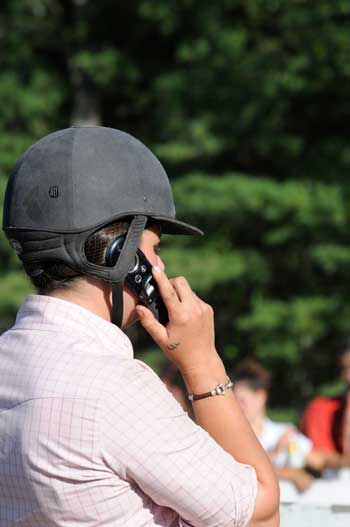You’ve submitted entry forms, arranged stabling for your horse and started to pack for a show this weekend when your phone lights up with a text message from a friend: He’s heard there’s an outbreak of equine herpesvirus, the deadly neurologic form, at the showgrounds where you’re headed. Is the rumor true? How can you find out? Fact and fiction travel equally fast via social media and the Internet, and right now it’s a challenge to get the facts about equine disease outbreaks.

That may soon change. The American Association of Equine Practitioners and the American Horse Council are teaming with national and state animal- health officials to create the Equine Disease Communication Center, a clearinghouse for accurate information about equine diseases throughout North America. The EDCC will rely on a network of practicing veterinarians and federal and state animal-health officials to gather and verify reports and then get the word out through a call center, a website and an email alert system.
“We plan to begin beta- testing the website this June with the goal of having the site open to the public by late 2014,” says former AAEP President Nat White, DVM, who has been closely involved in developing the EDCC. The communication center is part of a broader initiative that the groups call the National Equine Health Plan, which aims to identify issues related to disease control and prevention, clarify the roles played by the horse industry and state and federal authorities and educate people about disease hazards. The plan has been in the works for several years, spurred by a number of serious disease outbreaks. In one of the worst events, more than 400 horses in 2011 were exposed to neurologic EHV-1 at a cutting-horse competition in Utah and went home to barns in 19 states and Canada before the first case was recognized. The incident highlighted the need to share information quickly across state lines and among different horse-industry groups to limit the spread of disease.
Plans call for the EDCC website to have general disease information and a biosecurity guide along the lines of the Biosecurity Tool Kit for Equine Events developed by Katie Flynn, BVMS, of the California Department of Food and Agriculture after the Utah EHV-1 outbreak (online at http://www.cdfa.ca.gov/ahfss/animal_health/equine_biosecurity.html). But the main goal will be to coordinate and relay accurate information about outbreaks. The center will operate out of the U. S. Equestrian Federation headquarters in Lexington, Kentucky, and a funding plan was being worked out as of this winter. “We will be putting out a call to the industry, requesting donations and commitments to keep the center on a stable financial footing,” Dr. White says.









